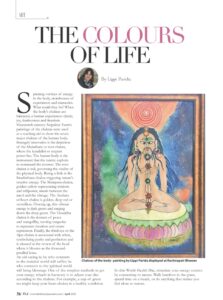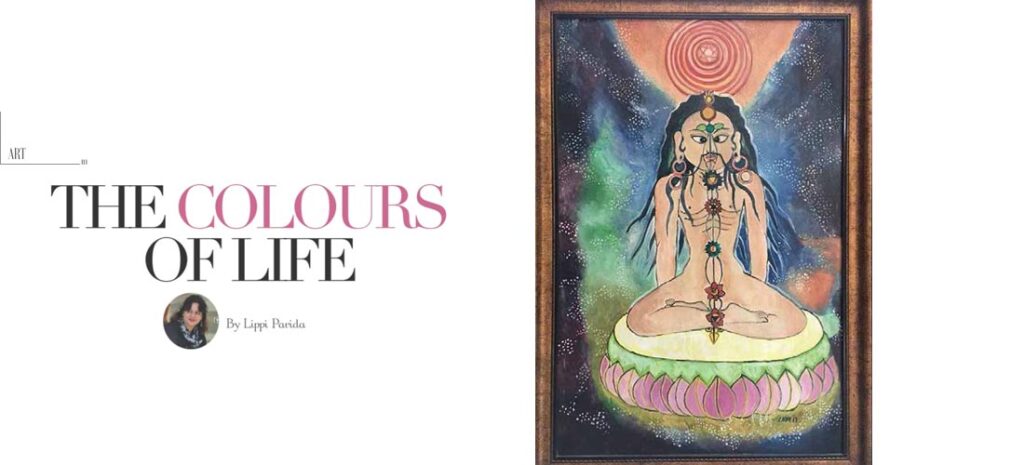Spinning vortices of energy in the body, storehouses of experiences and memories. What could they be? When the body’s chakras are balanced, a human experiences clarity, joy, fearlessness and freedom. Nineteenth-century Nepalese Tantric paintings of the chakras were used as a teaching aid to show the seven major chakras of the human body. Strangely innovative is the depiction of the Muladhara or root chakra, where the kundalini or serpent power lies. The human body is the instrument that the tantric exploits to command the cosmos. The root chakra is red, governing the vitality of the physical body. Rising a little is the Swadisthana chakra triggering nature’s creative energy.

The Manipura chakra, golden yellow representing wisdom and willpower, stands between the navel and the ribcage. The Anahata or heart chakra is golden, deep red or vermillion. Flowing up, this vibrant energy is dark green and surging down the deep green. The Visuddha chakra is the domain of peace and tranquillity, turning turquoise to represent intuition and create expression. Finally, the third eye or the Ajna chakra is associated with white, symbolizing purity and perfection and is situated at the crown of the head where it blooms as the thousand-petalled lotus. An old saying is; he who connects to the material world will suffer; he who connects to the spiritual world will bring blessings. One of the simplest methods to get your energy wheels in harmony is to adjust your diet according to the chakras. For example, a cup of green tea might keep your heart chakra in a healthy condition. So this World Health Day, stimulate your energy centres by connecting to nature. Walk barefoot in the grass, spend time on a beach, or do anything that makes you feel close to nature.

